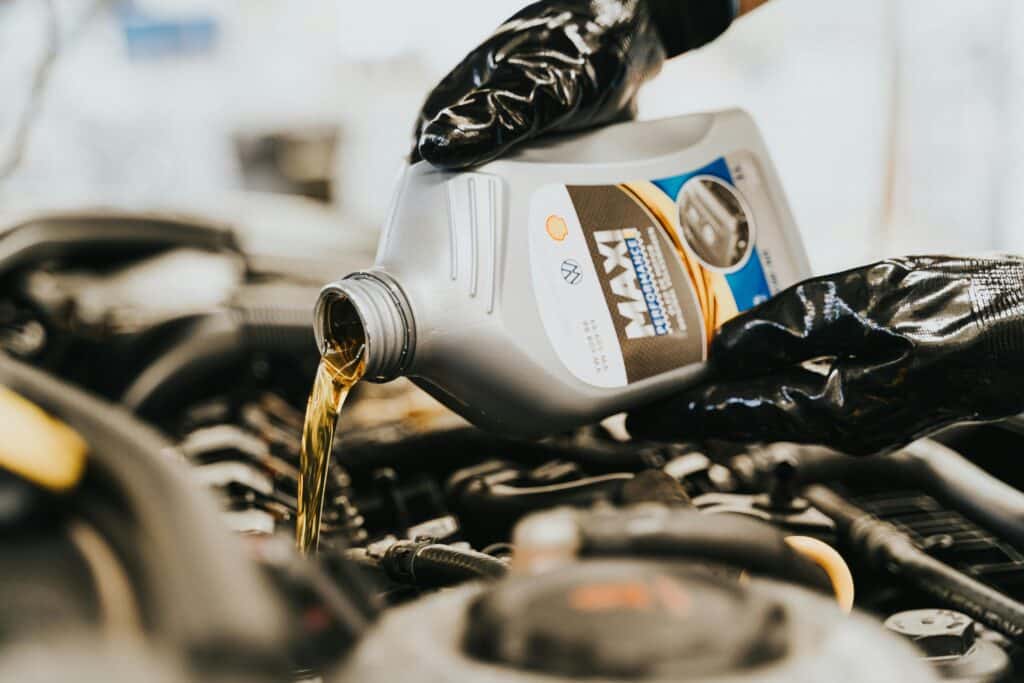A Practical Guide for Every Type of Vehicle
Few maintenance tasks deliver as much bang for the buck as timely oil service. Engine oil is both lubricant and lifeblood: it minimizes friction, carries away heat, suspends contaminants and guards critical surfaces against corrosion. But the “every 3,000 miles” rule of thumb your grandfather swore by no longer fits today’s engines, oils or driving patterns. Below is a clear, data-backed guide you can share with customers who ask how often they should book a mobile oil change—tailored to the most common power-train types on the road.
Why Intervals Aren’t One-Size-Fits-All
Engine design. Turbochargers, direct injection and higher compression ratios push oil harder than older port-injected engines.
Oil chemistry. Modern full-synthetic oils tolerate heat and oxidation far better than conventional blends.
Driving style & environment. Short, stop-and-go trips, dusty work sites, severe heat or extended idling all shorten an oil’s useful life.
On-board monitoring. Nearly every 2010-plus vehicle computes “oil life” based on drive data, not mileage alone.
The owner’s manual is always the final word, but customers still value ballpark guidance. Here’s how we frame it.
Recommended Service Windows by Vehicle Type
| Vehicle/Engine Type | Normal-Duty Interval* | Severe-Duty Interval† | Notes |
|---|---|---|---|
| Modern Gasoline (synthetic) | 7,500 – 10,000 mi (12–16 km) or 12 mos | 5,000 mi (8 km) or 6 mos | Follow oil-life monitor if equipped |
| Older Gasoline (conventional or blend, pre-2008) | 3,000 – 5,000 mi or 6 mos | 3,000 mi or 3 mos | Upgrade to synthetic to stretch intervals |
| Turbocharged / High-Performance | 5,000 – 6,000 mi or 6 mos | 3,000 – 4,000 mi or 3–4 mos | Heat cooks oil faster; stick to high-shear synthetics |
| Light-Duty Diesel (pickups, SUVs) | 7,500 mi or 12 mos | 5,000 mi or 6 mos | Use diesel-rated oil (API CK-4/FA-4, ACEA C3, etc.) |
| Heavy-Duty Diesel (fleet/commercial) | 15,000 – 25,000 mi or per telematics | 10,000 mi or fuel-hours-based | Lab oil analysis can safely extend intervals |
| Hybrid (gas-electric) | 5,000 – 7,500 mi or 12 mos | 4,000 mi or 6 mos | Engines cycle on/off; moisture dilution is common |
| Battery Electric (BEV) | No engine oil | Gearbox & coolant service at 30 k-60 k mi | Educate owners—no engine oil changes, but fluid service still matters |
*Normal duty: steady-speed commutes, mild climate, minimal idling
†Severe duty: frequent trips <5 miles, extreme temps, towing, dusty or stop-and-go routes
Deeper Dive by Category
1. Modern Gasoline Engines
Full-synthetic API SP or ILSAC GF-6A oils resist sludge at high temperatures and keep timing-chain tensioners happy. Most manufacturers now publish 7,500- or even 10,000-mile intervals, but only if you rack up most miles on the highway. Urban drivers should default to 5,000 miles.
Mobile-mechanic tip: An oil-life monitor reading of 20 % or less is a perfect reminder to get it serviced.
2. Turbocharged & Performance Mills
Turbo bearings spin up to 150,000 rpm and rely on pressurized oil for both lubrication and cooling. That shears molecular chains quickly, especially if the driver regularly enjoys boost.
Recommended playbook:
-
Stick to full-synthetic oils carrying the manufacturer’s approval (VW 504 00, GM dexos2, BMW LL-01, etc.).
-
Use shorter 5,000-mile intervals unless vehicle telematics or engine-oil analysis proves longer is safe.
3. Light- and Heavy-Duty Diesels
Soot loading, higher sump capacities and exhaust-after-treatment make diesels a different animal. CK-4 oils introduced in 2017 hold soot in suspension longer, but fuel dilution from frequent regenerations can still happen.
Best practice: Sample the oil once a year; base subsequent changes on viscosity, insolubles and total base number (TBN).
4. Hybrids
Because the engine may seal and cool repeatedly during a single grocery run, condensation accumulates. Shorter 5,000-mile intervals—or at least an annual change—prevent moisture-induced bearing pitting.
5. Battery-Electric Vehicles
Pure EVs have no crankcase, but they do have reduction-gear oil, thermal-management coolant and sometimes refrigerant compressors with oil. A drivetrain fluid exchange every 30 k–60 k miles is cheap insurance.
When “Sooner-Than-Scheduled” Makes Sense
Oil appears dark and gritty within a few weeks—a sign of fuel dilution or excessive blow-by.
Check-engine or low-oil-pressure lights flicker at idle.
You smell fuel, coolant or a “burnt” odor on the dipstick.
Towing, heavy payloads or track days are in the immediate future.
As a mobile mechanic, we can take an oil sample on-site and give an analysis, sparing the customer a second appointment.
Conventional vs. Synthetic—Worth the Price?
Synthetic base stocks have uniformly long molecular chains, so they resist vaporization and oxidation. Engines stay cleaner, piston rings seal better and high-temp viscosity holds up.
Blends split the difference on cost but rarely match full-synthetic longevity under heat.
Conventional is still fine for low-stress, low-mileage classics—but shorten the interval.
A quick cost breakdown for hesitant clients:
| 5,000-mi Service | Conventional | Synthetic |
|---|---|---|
| Oil + filter cost | $35 | $65 |
| Annual changes (12,000 mi/yr) | ~3 | ~2 |
| Annual spend | ~$105 | ~$130 |
For most drivers, the extra $25 a year buys fewer visits, lower emissions and a higher buffer against engine wear.
Final Thoughts: Make Oil Changes Effortless
Customers care less about API specs than they do about convenience and peace of mind. A mobile oil service that:
Comes to their driveway or office
Digitally logs oil-life resets and service records
Offers oil analysis for extended-interval candidates
…turns routine maintenance into a premium experience.
Need help building an interval schedule for your personal fleet—or want your next oil change done without leaving the couch? Romo’s Mobile Mechanics brings certified techs, premium oil, and digital inspection reports right to your curb. Book online in 60 seconds, and we’ll handle the rest—fresh oil, safe engine, zero hassle.

